Table of Contents
Lake Titicaca is also known as the highest navigable lake in the world, at 3800 meters above sea level. It is one of the most important lakes in South America, where high Andean communities still live on floating islands made of Totora and/or reeds that grow in the surroundings.
In recent years, the inhabitants of the floating islands have developed community-based rural tourism as an alternative for visitors who want to get to know the lifestyle of these communities.
Lake Titicaca is located between the countries of Peru and Bolivia, in the part belonging to Peru, is located in the region of Puno, at an altitude of approximately 3800 meters above sea level, with a temperate climate during the day and cooler at night.
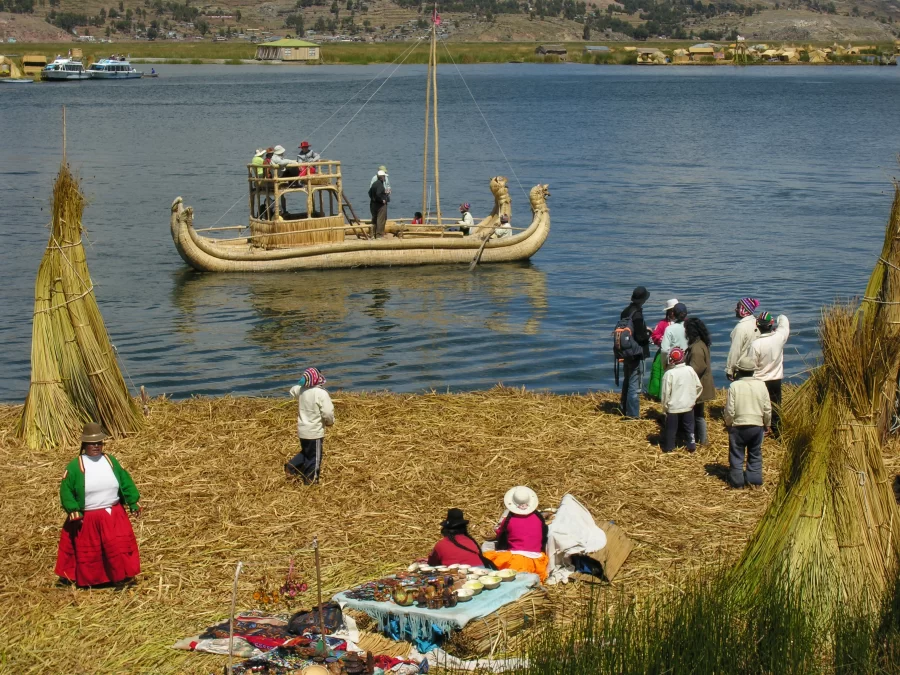
It has its own Titicaca National Reserve that seeks to protect the local flora and fauna.
Within the fauna, 159 species are registered, of which the following are:
In the case of the flora of Lake Titicaca, a total of 171 plant species were found, where the cattail is one of the most emblematic of the place, serving as the main resource for the construction of houses, boats, suspension bridges, among other social contributions that covers about 26, 600 hectares of cattails in the sectors of the reserve.
In this map you will find the most important sites of Lake Titicaca, where you can visualize the destinations you want to visit in your next adventure.
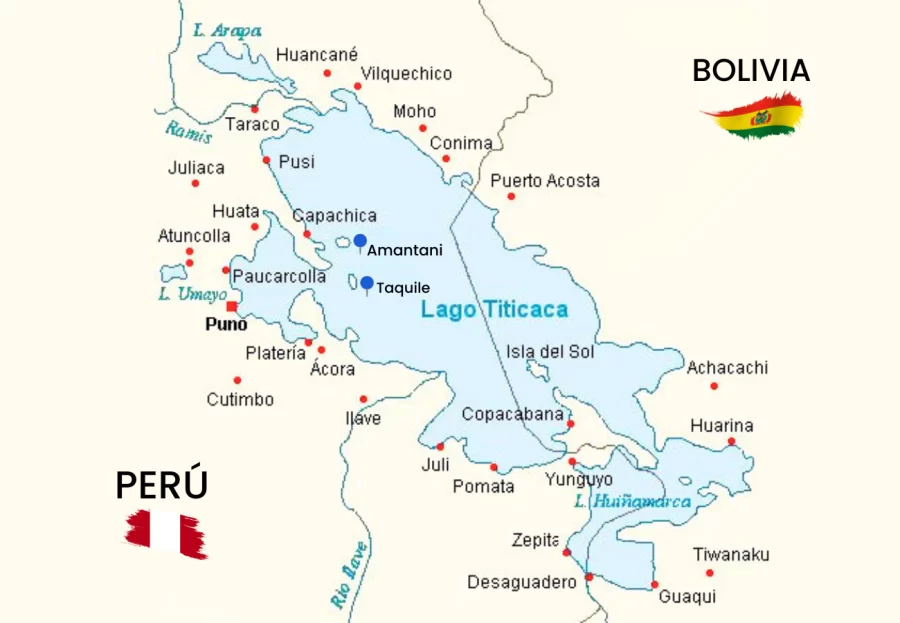
We also present the exact location of Lake Titicaca.
One of the most recommended tours to know Lake Titicaca is the 2 days 1 night tour, a tour that includes a visit to the islands of Taquile, Uros and Amantani, with an overnight stay on the floating islands. Accompanied by your guide and the local people of each island you will be guided in each part of tourist interest, as well as they will teach you part of their traditions and customs.
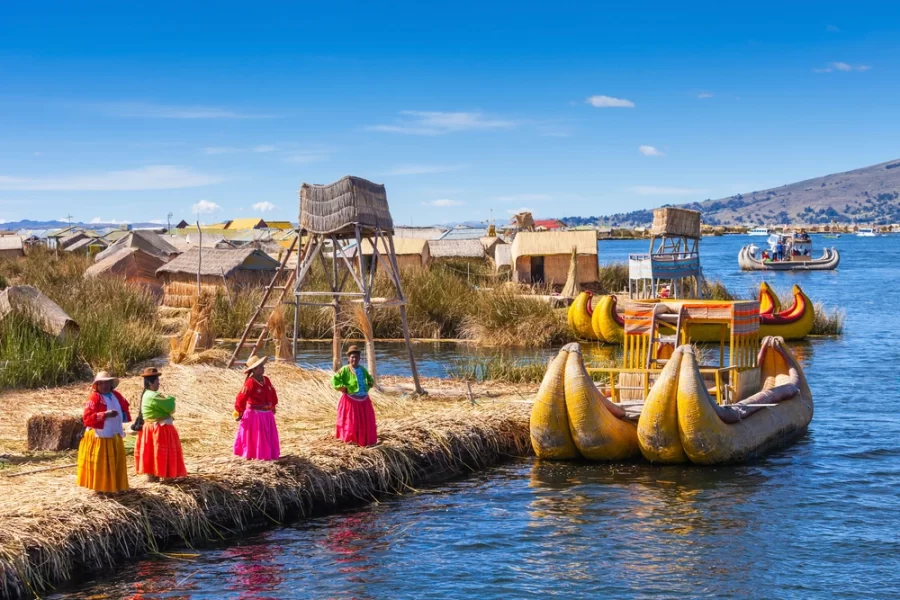
In Lake Titicaca there are different activities that are offered to the public from one day options to complete 4 day tours, among the most outstanding activities are the following:
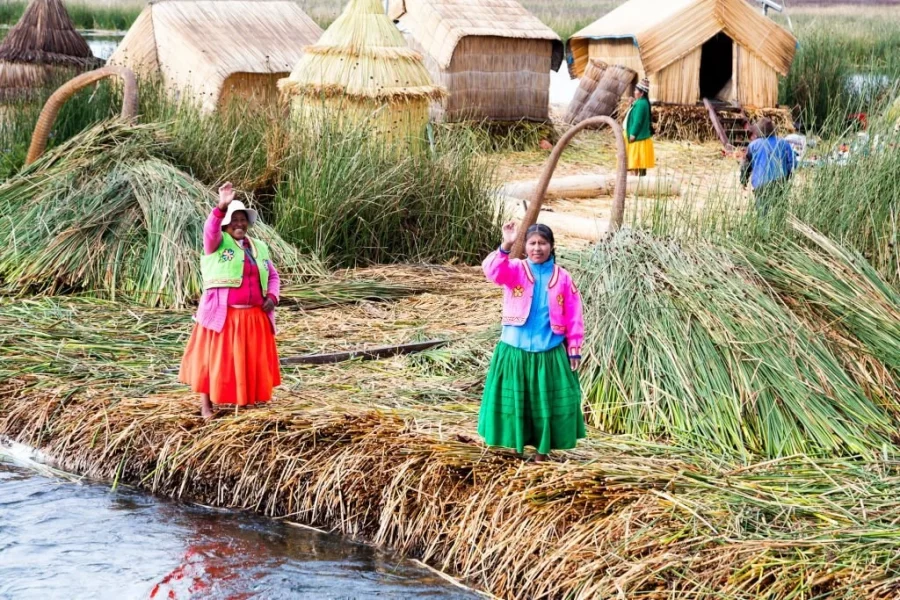
This destination is undoubtedly one of the major attractions of the Puno region. The island is artificial floating, made of totora reeds and reeds, which show their ancestral traditions of reed weaving to keep the island afloat, recognized as one of the most outstanding living vestiges of pre-Columbian cultures. Being the island of the Uros the point of greatest tourist concentration in Lake Titicaca.
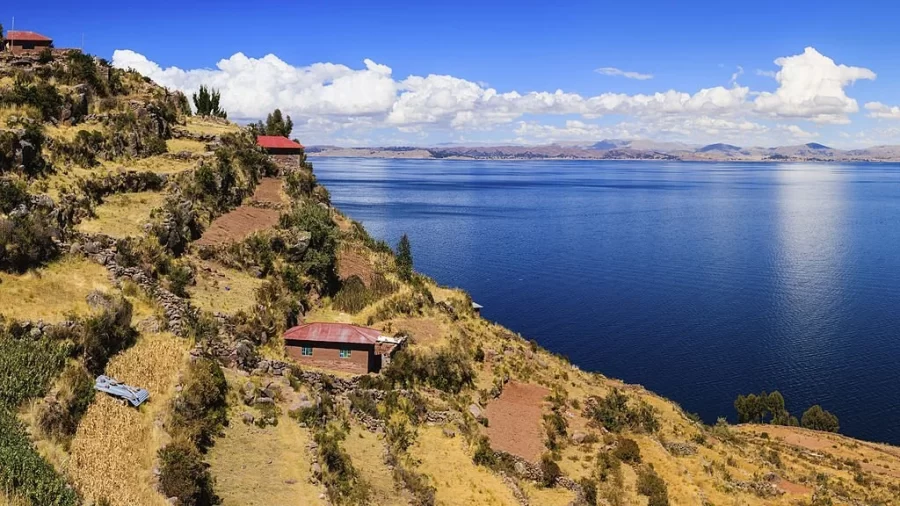
The island of Taquile is the second largest island of Lake Titicaca (on the Peruvian side), after the island of Amantani, with an altitude of 3950 meters above sea level, is known as the island of weavers, where by tradition and custom, are the men of the island who develop the finest textiles, this art of the island was declared as ''Masterpieces of the Oral and Intangible Heritage of Humanity'' by UNESCO. Taquile also stands out for its archaeological remains and pre-Columbian terraces, which you can visit during your stay on the island.
Amantani Island is the largest on the Peruvian side, has an economy based on agriculture and livestock, its textile production is very similar to that of Taquile Island, on this island is the Ceremonial Temple of Mamapacha and Tatapacha, so it is very rich in history, an alternative for those seeking to disconnect from the city.
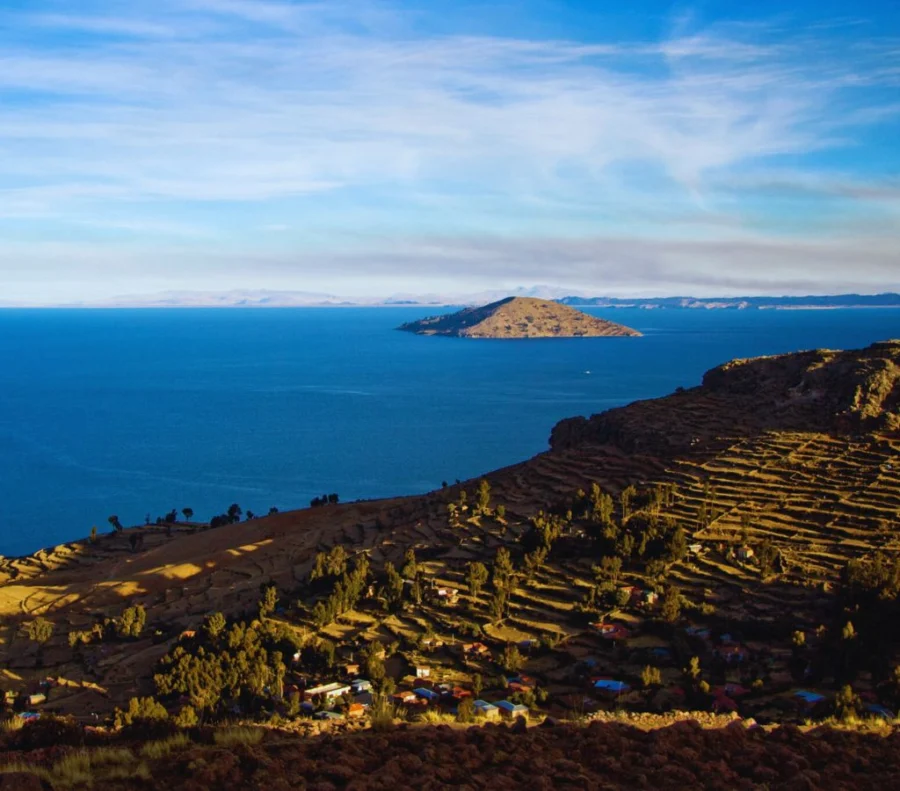
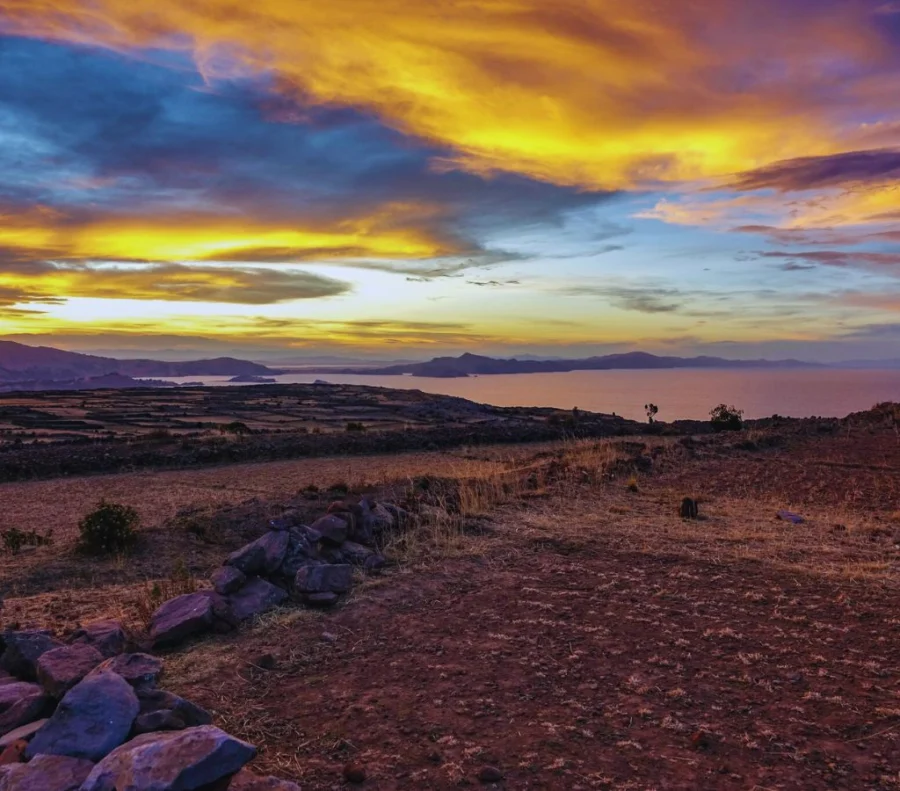
The Ticonata Island is smaller, this island is visited mostly by those who wish to make Mystical Tourism, on this island are major archaeological remains of the Tiahuanaco culture. And the surprising thing is that their houses are built in circular, similar to the pre-Inca Putucos.
Lake Titicaca on the Bolivian side also has islands that already offer the service of rural community tourism, it should be noted that the largest islands are on the Bolivian side and the most prominent are the Isla del Sol and Isla de la Luna.
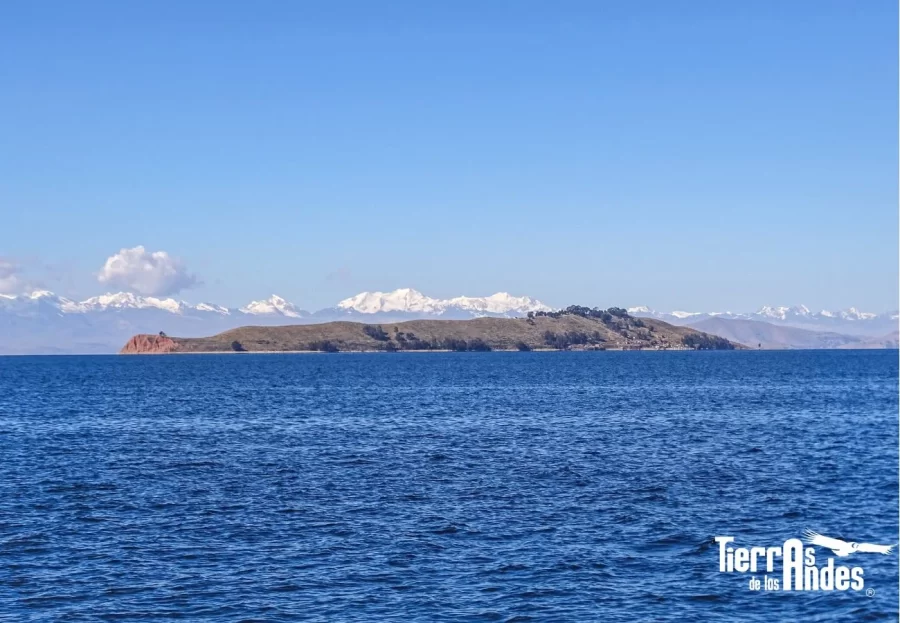
The Isla del Sol is the largest island of Lake Titicaca, is located on the Bolivian side of the lake, currently this island has one of the largest archaeological remains such as temples, water fountains, chinkanas, among others. It also has the Challapampa Site Museum, where ceramic pieces, textiles, and other lithic remains found on the island are on display.
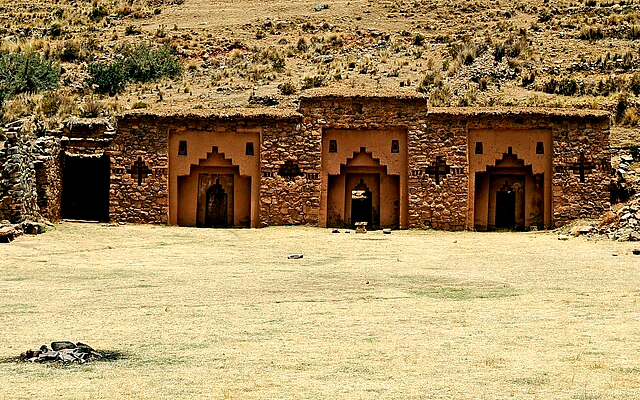
The island of the Moon is located in the territory belonging to Bolivia, among the most outstanding attractions of the island is the Temple of the Virgins.
To get to this Moon Island you leave from Copacabana by car, the trip can take up to 1 hr approx. and then take a boat to reach the island.
In this place, community-based experiential tourism is also practiced, so the local people usually welcome visitors with dances and the traditional APTHAPI, which consists of a buffet lunch with traditional local dishes.
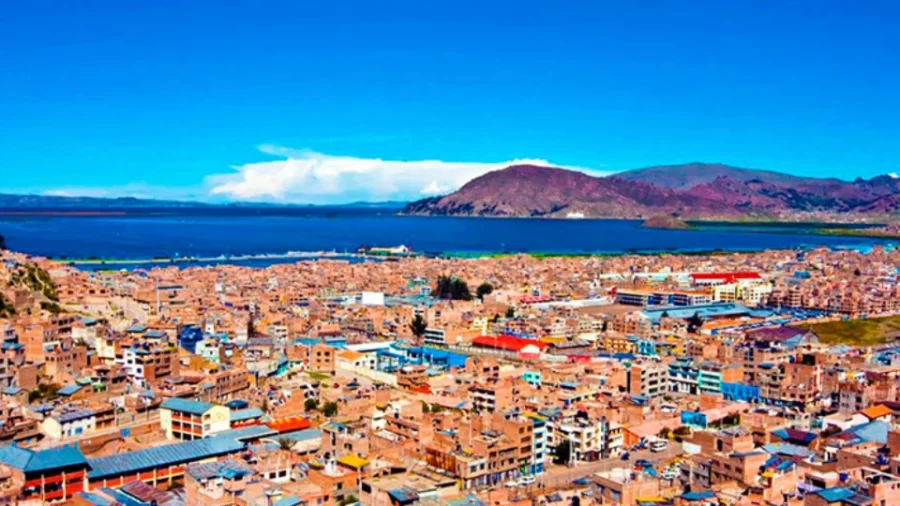
Visiting Puno is among the favorite destinations for its main attraction of Lake Titicaca, but there are many things you can do in Puno, for example visit the Cathedral of Puno, walk through the Plaza de Armas, visit the Casa del Corregidor, the Coca Museum or climb the Cerro Huajsapata that functions as a viewpoint of the entire city of Puno.
Also remember that being in Puno, it is unforgivable not to try its rich gastronomy such as: pesque de quinua, chupe de quinua, chicharon de alpaca, cancacho puneño, fried trout and more.
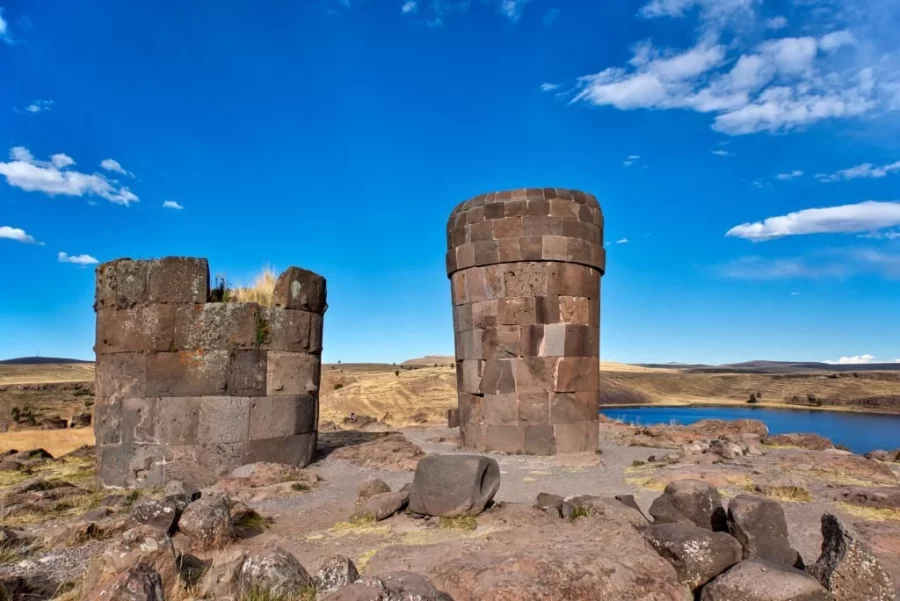
The archaeological complex of Sillustani is another of the sites visited by tourists, this place is famous for its funeral towers "Chullpas" that were built by the different Inca cultures.
The Chullpas measure up to 12 m high surrounding the Umayo lagoon, in each funerary tower were found noble men who were buried with offerings and can take the next step to the afterlife.
The tour to Sillustani you have q from Puno that will take a time of 40 minutes, and the tour lasts at least about 3 hours and 1/2 and you do it in the afternoon hours (2pm to 6pm).
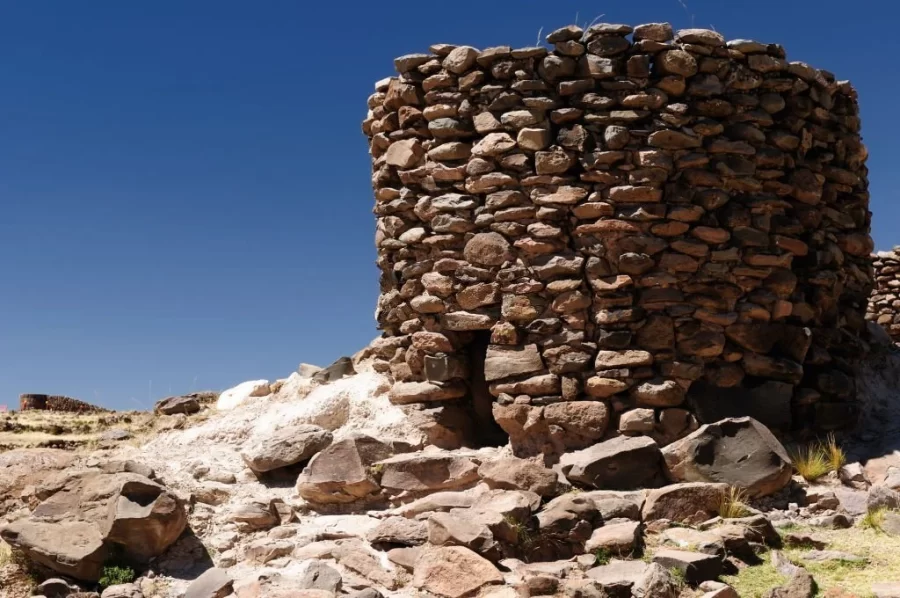
The Cutimbo Archaeological Complex is located 22 km from Puno, here you can visit the burial tombs and some cave paintings dating back to the archaic era (8000-2000 BC) to the Inca period.
If you want to know Cutimbo, you can do the day tour, and it lasts about 3 hours, it is recommended that you buy the package 24 hours before the trip, during the guided tour you will know the Chullpas of Cutimbo and the Ceremonial Center of Death.
The Capachica Peninsula is bordered by the waters of the Titicaca, where you will find six tourist communities where you can do rural, community and experiential tourism. You can also visit the Plaza Mayor or kayak (individual canoe) in the calm waters of the Titicaca, stay on the floating islands, hike to the viewpoints, and taste its gastronomy.
Luquina opens its doors to us for experiential tourism, in which we will learn about their culture, food and traditions. Its inhabitants will teach us everything about them, and you will even be part of their daily life.
Excursions to this destination are daily, you can take a bus from Puno to Luquina chico, the trip is about 1 hour and a half on average or hire a tour of 2 days and 1 night in which you will visit Uros, Taquile and Luquina.
The Socca Peninsula is located next to Lake Titicaca, you must make a full day tour, to reach this destination starts by silver to then head towards the beaches of the Charcas, where they raise trout and finally we arrived at the Socca Peninsula.
Already in the place, you must climb to the summit where you can appreciate one of the best spectacles it has, just to see the waters of the lake enchant and even more so the sunset.
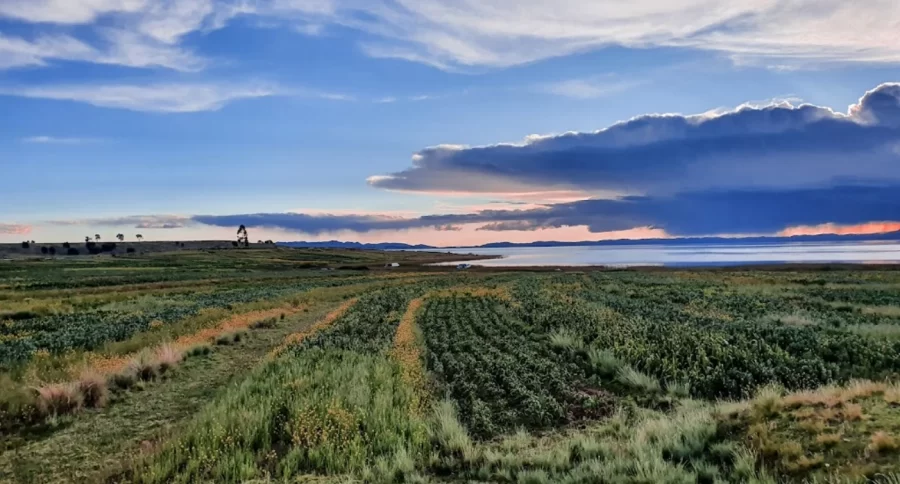
Anapia is part of the smaller lake of Titicaca, most of its houses and institutions are located on the main island of Anapia, visiting this place means being part of a cultural exchange with the local families.
The options you have to do in Anapia are to go on sailing trips, hike in the neighboring islands and stay overnight in one of the lodging houses.

The Tiwanaku or Tiahuanaco Archaeological Center is located in Bolivia, and to get to this attraction from Puno we will have to go by bus to Desaguadero, border with Peru and Bolivia, the trip will take us about 3 hours on average.
Once in the place, you will have to process the necessary documents to enter Bolivia, then you will have to drive to the Archaeological Center of Tiahuanaco where you will have to pay an entrance fee and you will be able to visit the following buildings:
Puma Punku: This temple is part of Tiwanaco, its shape is unique because it was built with stones that have perfect right angles, showing a unique finish as if it had been polished with a tool.
Ceremonial Center: This construction is about 126 m long and 117 m wide, inside the place you will find a huge rectangular patio with steps made of a single rock of six steps, in which you will pass through a monolithic door and in the center you can see the "Stela" or the "Monolith of Ponce".
Door or Doorway of the Sun: It is one of the most important of all the Ceremonial Temple, because in it is represented the God Wiracocha or God of the Wands, it is possible to see it, since it was sculpted in a single piece of stone, in high and flat relief.
The monolithic portal is 3 m high and 3.75 m wide, and its weight is estimated to be about 12 tons.
The Akapana Pyramid: Like the previous ones, this is one of the archaeological remains that you will visit. Here you will see a pyramid, seven levels that are mostly eroded, it is 17 meters high and 200 meters wide. Near this complex you will find the subway Temple and the Kalasasaya, the Akapana with direction to the four cardinal points.
Arriving in the city of Puno you will find many hotels near the Plaza de Armas, then when you move to the islands you will visit you can stay in one of the houses that have that availability. However, to have a more pleasant experience and where you do not have those hustles and bustles is advisable to travel with a travel agency such as Tierras de los Andes, where you do not have to worry about the place to spend the night because it has the service:
Lake Titicaca is the highest lake in the world and offers numerous opportunities to explore the rich Andean culture. It is located between Peru and Bolivia, in the highest part of the Andes, making it one of the most popular adventure destinations in South America. It offers a wide variety of activities, from visiting the floating villages of the Uros to exploring the incredible landscapes of the region. In addition, there are several historical sites to visit, such as the remains of the Tiahuanaco civilization and the Copacabana temple.
Lake Titicaca offers a unique experience for travelers, who can enjoy the Andean culture, history and natural beauty of the region, we list the most important things you can visit with Terandes.com in Lake Titicaca in Puno.
